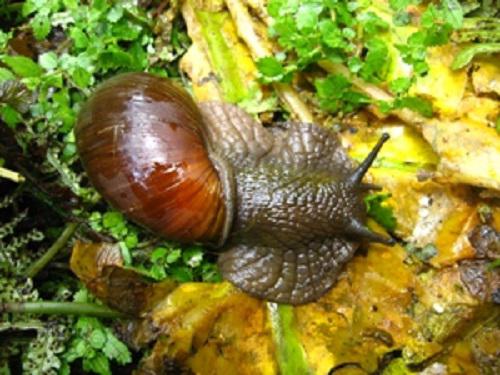Victor Borda Pua
The aim of the project is to determinate the recent conservation status of giant land snails species (Megalobulimus spp.) and describe how these snails respond to main habitat threats.

Southeastern Perú is recognized like a most diverse and endemic area in the world (e.g. Young, 2007; Pacheco, 2002; Duellman, 1999; Graves, 1988), but there is still a scarce knowledge about the diversity and the conservation status of invertebrates. Land snails are a diverse group of invertebrates and are used as models to answer ecological and evolutionary questions that have more relevance for conservation priorities (Hugall et al, 2002, 2003).
/b9cce1254be91f96ed43d6cd9b5ef914.JPG)
Giant land snails of the Megalobulimus genus are a conspicuous element of the Amazonia fauna. These are edible for Amazon people and also have a large distribution in the Amazon, from Venezuela to Argentina. Four Megalobulimus species are reported from south-eastern Peru: (M. popelairianus, M. maximus, M. capillaceus and M. leucostoma) (Bequaert, 1948). This area is affected by different impacts like agriculture, habitat degradation and under extraction pressure. These problems motivated us to determinate the recent conservation status of Megalobulimus species and describe how these snails respond to main habitat threats. In order to accomplish this goal, we will focus on ecological and genetic studies.
Ecological studies involve habitat description and estimates of population size. Furthermore, in order to determinate the current and possible distribution of Megalobulimus and how much it changes in the last million of years, we will generated a model of patterns of distribution. Genetic studies involve two approaches, phylogenetics and phylogeography. The phylogenetic approach we will evaluate evolutionary relationships among species of Megalobulimus described for the oriental slope of central Andes and their relationship with other land snails. The phylogeographic approach will provide insight into the processes responsible for generating diversity by reconstruction of historical demography.
These two approaches will provide a sign of their conservation status.